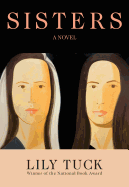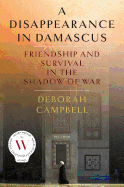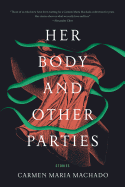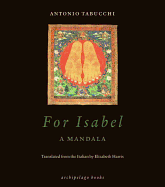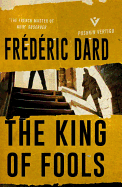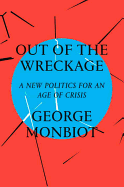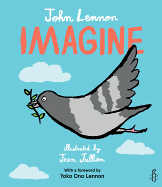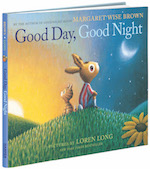Tuesday, October 3, 2017
Writer, critic and essayist Carmen Maria Machado's first collection of short stories, Her Body and Other Parties (Graywolf Press, reviewed below), was recently longlisted for the National Book Award. Shelf Awareness spoke with her about the book.
 |
|
| photo: Tom Storm Photography | |
Pondering the process of putting together her debut short story collection, Machado had much to say. "Once upon a time, I didn't believe story collections had to be organized or curated; wasn't it enough that it was a collection of stories? But, of course, since then I've realized the collections I've read that are the most powerful, memorable and vibrant are collections that chew on interesting and complementary ideas; collections that possess a sense of purpose and focus. So I looked at all of the stories I'd written and began to see themes emerging between particular ones. I gathered those stories into one place and realized I had a book's worth--and not just in terms of length, but in completeness of conversation."
As to how she went about killing her darlings: "When my editor Ethan Nosowsky came in, he suggested I cut a couple of them, and I realized he was right--a few of the stories were slight and repeated certain themes without expanding on them. So out the door they went! The result is a tight, lean collection curated to reflect my current obsessions with the oppressed body, gender, sex and sexuality."
"I am both terrified and thrilled to see my book out in the wide world," Machado admitted. "I've been publishing stories and essays for a few years, so I'm already 'out there' in one sense, but it is an entirely different animal to have a published, print book of just your work. The stories are now fixed, and no longer my own--they belong to the readers who read them. That process of letting go has been very intense." --Stefanie Hargreaves, editor, Shelf Awareness for Readers
Sisters
by Lily Tuck
Sisters is another literary wonder by National Book Award winner Lily Tuck (The News from Paraguay, The Double Life of Liliane). It explores the often awkward, sometimes obsessive relationship of a second wife to her predecessor. The narrator hears about the ex-wife (only named as she) in her husband's reminiscences, looks for the woman's features in her two teen step-children, and sees early years of their marriage in old family photos in her husband's apartment. In time, she increasingly sees her predecessor in person--when dropping off the kids at her Upper East Side apartment ("she was not looking her best... I was glad to see her looking older and in slight disarray"), at her local Fairway grocery, even accidently crossing paths in the ladies' room at her daughter's wedding.
Tuck's 40-year-old narrator was once a free-spirited, occasional drug-taking young woman trying to make it in the city. She remembers all of her lovers and becomes obsessed with her husband's sexual past, particularly that with his ex-wife. When he travels frequently for his job, she develops closer ties with his children, especially the strapping math prodigy son. She rekindles a relationship with a former lover visiting the city: "For old times' sake, I told myself. No regrets." An educated woman and amateur photographer, she frequently quotes from works triggered by what catches her interest: Philip Roth, Mario Vargas Llosa, Václav Havel.
Sisters is a novel about marriage, family, sex, jealousy and vanity. Its narrator makes her way through entanglements and digressions as her life moves toward a surprising but fitting outcome. --Bruce Jacobs, founding partner, Watermark Books & Cafe, Wichita, Kan.
Discover: Sisters is a spare, stunning story--of a marriage, a former wife, a husband, stepchildren and a woman finding her way among them.
Her Body and Other Parties: Stories
by Carmen Maria Machado
Carmen Maria Machado subverts the known world and its expectations in her ingenious debut story collection, Her Body and Other Parties. Reading it is a heady and unnerving, sometimes horrifying, experience that opens up human identity as if it were a flower. From the dark corners of existence, from the cracks between pretensions, Machado conjures monsters and angels that, in the light of her deft yet sensuous prose, become painfully recognizable.
Eight stories make up the collection, and many contain elements of magical realism. Machado melds folklore and fabulist images with the raw realities of love, sex, queerness and alienation. There are also satirical elements in these stories, ironies embedded in the dreamy plots like shards of glass. Nowhere are these shards sharper than in "Especially Heinous," a novella-length send-up of Law & Order: Special Victims Unit that summarizes every episode of the long-running television show. Few writers can successfully blend trenchant wit aimed at machismo and misogyny with truly creepy gothic imagery. In "Eight Bites," a woman is haunted by the blob-like ghost of her former body, which she tried so hard to lose. And in "The Resident," the alienated protagonist finally understands that knowledge "was a dwarfing, obliterating, all-consuming thing, and to have it was to both be grateful and suffer greatly."
Her Body and Other Parties has so many beautiful lines and sophisticated passages that it would be hard to highlight them all. More importantly, though, it demonstrates that literature, when forthright and brave, can simultaneously dig deep within the self and reframe the greater world. --Scott Neuffer, writer, poet, editor of trampset
Discover: In her first story collection, fabulist Carmen Maria Machado brilliantly explores the bondage of the human body and the redeeming powers of love and sexuality.
For Isabel: A Mandala
by Antonio Tabucchi, transl. by Elizabeth Harris
There's a reason Antonio Tabucchi's For Isabel carries the subtitle A Mandala. Structured in a way that mimics Buddhist iconography, the novel is an investigation, a journey and a prayer. Much like diving into a dream, or walking into a church, For Isabel has an aura of holiness as it moves toward its center: Isabel, a mysterious figure the narrator once knew.
The plot, such as it is, follows the narrator, a Polish author who awakens from death, as he interviews (and sometimes threatens) associates of Isabel in order to find her whereabouts. Each interview makes up a ring of the Mandala, and each one leads further along, providing more clues as to who Isabel is, and who the narrator was. If the spiritual element was removed, For Isabel would read like a crime novella: Isabel has a checkered past, working with revolutionaries and spending time in prison. But the spiritual element is indelible. Planes of existence are crossed, and the dead brought back to life, in order to reach the center of Tabucchi's project.
Luckily, that center is worth its intrigue. Isabel's path through life, and the narrator's path following her, is filled with brilliant twists and turns, spanning continents and lifetimes. Even a clever reader won't be able to guess every direction the story takes, though it would be wrong to say For Isabel has twists. Instead, it invites you into the life of a complicated woman, and a man doing anything to find her. --Noah Cruickshank, adult engagement manager, the Field Museum, Chicago, Ill.
Discover: For Isabel is an elegiac novel that treats the solving of a mystery with the logic of dreams.
Mystery & Thriller
The Western Star
by Craig Johnson
Craig Johnson takes readers on a gripping rail journey into his Wyoming sheriff's past for the 13th novel of the Walt Longmire series (after An Obvious Fact). A photograph of 24 sheriffs--and one deputy--in front of a locomotive triggers a dark memory for Walt. As the lone deputy, he accompanied then-sheriff Lucian Connelly for the 1972 Wyoming Sheriff's Association junket aboard the train The Western Star. The itinerary took the passenger puller from Cheyenne to Evanston and back--but not everyone returned alive.
The decades-old image kindles Walt's memory, and the flames are stoked by a parole hearing in Cheyenne, for which he's en route. Usually just a required formality resulting in denial of parole, Walt attends to fulfill a promise. So word that the mysterious convict's attorneys are petitioning for compassionate release douses Walt's memory fire with lighter fluid.
Offering glimpses of Walt's relationship with his late wife, Martha, and the onset of his career in Absaroka County, The Western Star peels back complex layers that define the beloved sheriff. Series devotees will delight in new pieces to Walt's puzzle while those discovering the series should easily jump right into the man's life. At a baker's dozen of Longmire novels, Johnson shows no signs of skimping on quality. The Western Star combines a thrilling plot, colorful characters, exceptional dialogue and, of course, Johnson's signature humor. Johnson even includes a clever literary tie-in with Agatha Christie's Murder on the Orient Express.
All aboard! The Longmire train is in the station, and you don't want to miss this one. --Jen Forbus, freelancer
Discover: A highly personal case early in Walt's career haunts him as he battles attorneys petitioning for compassionate release of a mysterious convict.
The King of Fools
by Frédéric Dard, transl. by Louise Rogers Lalaurie
Though the late, astonishingly prolific author and playwright Frédéric Dard wrote hundreds of novels, stories and plays, he isn't well known in the English-speaking world. But some of his classic noir titles are finally being translated from French into English, and are sure to appeal to fans of Agatha Christie, Raymond Chandler and Georges Simenon.
The King of Fools opens in the Cȏte d'Azur, where the blasé Jean-Marie Valaise is vacationing alone, having broken up with his longtime girlfriend, Denise. Jean-Marie becomes entranced with an Englishwoman named Marjorie after an accidental meeting, and begins to obsess about her, even after Marjorie departs for England. The reappearance of a repentant Denise distracts Jean-Marie for a few days, but when Marjorie writes him that she'll be heading to Edinburgh, he leaves on a whim to find her.
Dard's beautiful sense of place--contrasting the sunny south of France and the dark rain of Edinburgh--reflects Jean-Marie's shifting mood. It plummets from elation and love into bewilderment and fear as circumstances in Edinburgh come to a dramatic head. With blood on his hands, Jean-Marie is trapped in a nightmare in this unfamiliar city, leaving the reader hanging on Dard's every word, to see how it will resolve.
A slim novel with laconic prose and a stunning plot, The King of Fools will keep many a mystery lover up too late--and waiting eagerly for the next novel of Dard's to be translated into English. --Jessica Howard, bookseller at Bookmans
Discover: In this noir novel, a young Frenchman faces his worst nightmare in Edinburgh.
Biography & Memoir
A Disappearance in Damascus: Friendship and Survival in the Shadow of War
by Deborah Campbell
When Canadian journalist Deborah Campbell landed in Damascus in 2007, she was on assignment for Harper's magazine: charged with telling the story of the Iraqi refugees who had fled to Syria after Saddam Hussein's government was overthrown. Campbell soon met and hired Ahlam, an Iraqi refugee and "fixer" who worked with journalists and humanitarian groups to provide reliable contacts and information. The two women became friends, and Campbell began spending much of her time at Ahlam's apartment, which functioned as an informal neighborhood center. But when Ahlam was taken from her home and imprisoned, Campbell became determined to find her, worrying that her presence had put her friend in jeopardy.
In her memoir, A Disappearance in Damascus, Campbell paints a vivid portrait of Ahlam: a strong, competent woman who found herself in limbo when her country collapsed, waiting in Syria for the chance to build a new life elsewhere. Campbell traces the complicated politics of the conflict and the heartrending, frustrating plight of refugees, while acknowledging her own privilege and freedom of movement as a Westerner and observer. As she investigates Ahlam's arrest, Campbell uncovers more evidence of her friend's bravery and the shadowy tactics of the state. Ahlam offered Campbell, and now Campbell offers her readers, "a way to understand the foreign country that was the war, and how anyone could survive and yet remain human." Harrowing, well told and deeply compassionate, Campbell's narrative illuminates the hidden consequences of war and the tensile strength of an unlikely friendship. --Katie Noah Gibson, blogger at Cakes, Tea and Dreams
Discover: A vivid, compelling memoir by a Canadian journalist of her friendship with an Iraqi refugee and "fixer" in Damascus.
Victoria and Abdul: The True Story of the Queen's Closest Confidant
by Shrabani Basu
Victoria and Abdul: The True Story of the Queen's Closest Confidant by Shrabani Basu recounts with intimate and fascinating detail the ascension of Muslim Indian servant Abdul Karim from serving at Queen Victoria's table to becoming her closest friend and teacher, much to the resentment and jealousy of the rest of the royal household.
As a young clerk at the time of British colonial rule in Agra, home of the Taj Mahal, Abdul Karim's good looks, height and regal bearing earned him the position of a royal servant at the Golden Jubilee celebrations. Here Queen Victoria, as "Empress of India," hosted bejeweled Indian princes and princesses. The queen showed no race or class barriers, and protected her Indian servants from the prejudices of the Royal Court. She asked Abdul Karim to teach her Urdu, his native tongue, because she wanted to communicate with her Indian subjects and understand them better.
In this much-anticipated second edition of Victoria and Abdul, Basu includes excerpts from Abdul Karim's diary, which until recently was considered lost with the rest of his royal artifacts. His family smuggled it out of England to India and then to Pakistan during the British partition of India. Everything else pertaining to his relationship with the queen was destroyed by her heirs. Upon her death he was banished from England, a final victory for members of the royal household keen on sabotaging the relationship.
Basu's storytelling is rich and sumptuous, capturing England in its glory, and the sights, sounds and smells of Agra. Victoria and Abdul has been made into a recently released film directed by Stephen Frears and starring Judi Dench. --Shahina Piyarali, writer and reviewer
Discover: A historical account of Queen Victoria's controversial relationship with her Indian Muslim servant and teacher, Abdul Karim, enriched by the recent discovery of a missing diary.
Political Science
Out of the Wreckage: A New Politics in an Age of Crisis
by George Monbiot
The problem with current left-wing politics and politicians, according to British author and Guardian columnist George Monbiot (How Did We Get into This Mess?) is in part due to the failure of their worldviews, or what he calls "stories." An inspiring, easily understood political story may overwhelm any factual argument. It can be defeated only by a new, more appealing one. Out of the Wreckage is his ambitious attempt to construct such a story.
"Our challenge is to produce one that is faithful to the facts, faithful to our values, and faithful to the narrative patterns to which we respond." Monbiot writes that the two most successful stories of the 20th century were those of the social democrats and neoliberals. Both, though, have failed, he says, and need to be replaced. He describes the historical rise of these approaches, and the problems they have confronted in more recent years. The values of individualism and extreme competition have been found lacking. We need to expand government services, build inclusive community life, restore respect for each other and the planet, and revive democracy and our confidence in institutions. He analyzes the 2016 U.S. Democratic presidential campaigns (he is a Bernie Sanders fan), and provides a concise four-page summary of ideas that reads like a draft of a party platform. This is a clear, broadly informed and well-presented contribution to the discussion of where our societies need to go next, and how we can make them work for all of us, together. --Sara Catterall
Discover: Author and Guardian columnist George Monbiot lays out his ideas for a fresh and hopeful left-wing political narrative in this short, well-organized book.
Essays & Criticism
Sock
by Kim Adrian
In Sock, part of Bloomsbury's Object Lessons series, which probes the depths of everyday items, essayist Kim Adrian takes a closer look at a consistently overlooked, nearly essential article of clothing: the sock.
Starting with the invention of the hay sock in the Ötztal Alps around 3,300 BCE, and moving through time to the fetishized, cozy slipper-socks worn today, Adrian delves into the history of an object that is donned daily around the globe. Her narrative swells from this pure historical account into a series of related musings on the fragility of the human form as she considers the physical awkwardness of a foot. Adrian also explores how the foot and the sock are connected to desire and human compassion. She uncovers revelatory facts such as how the nerve endings in our feet may explain the prevalence of foot fetishes, and how images of discarded shoes can be emotionally resonant.
Through a discussion of the footwear's material, social and cultural evolution, Sock reflects on the brilliance present in the minutiae of our lives. With piercing wit, idiosyncratic humor and sharply insightful moments of personal examination, Adrian uses the most domestic of items as a lens through which to view the inelegance and wondrousness of humanity. Encompassing the utility of protecting an essentially vulnerable, uncomfortable body and the bonds mothers form with the objects that cover the delicate toes of their babies, Adrian's warm, insightful investigation will give this common object new prominence in any reader's mind. --Alice Martin, freelance writer and editor
Discover: Sock delivers a detailed exploration of human nature through whimsically astute commentary on a common, closely held object.
Pets
The Dogs of Avalon: The Race to Save Animals in Peril
by Laura Schenone
Laura Schenone had good reason to fear animals: she was bitten twice by canines in childhood. To her, "Animals... meant meat, milk, cheese, eggs, fish. I believed they should be treated humanely, but they were food, nonetheless." Therefore, it made sense for Schenone (The Lost Ravioli Recipes of Hoboken) to focus her writing career on cooking and food for many years. However, a chance encounter with a woman advocate for--and rescuer of--Irish greyhounds and lurchers, which are mixed-breed sight hounds, sparked Schenone's interest to learn more about the lives of these gentle, graceful, aerodynamic working dogs that are the fastest dogs on earth. When Schenone adopted an abandoned lurcher from County Cork as a companion for her nine-year-old son, she was further inspired to research a network of dedicated animal activists--a small, fervent band of women proponents from Europe and the U.S. The group began by finding homes for street dogs and later broadened their efforts to offer rehabilitation, re-homing and ultimately create a sanctuary for these and other animals.
Captivating personal stories about the rescuers and the challenges and risks of their plight are woven around a history of greyhounds. Schenone explores how the breed emerged and evolved in prominence in England, Australia and Ireland, where the Emerald Isle became the leader in breeding and exporting for the dog racing circuit. This thorough, well-presented narrative investigates animal injustice and abuse and is sure to offer compelling inspiration for animal welfare devotees and advocates worldwide. --Kathleen Gerard, blogger at Reading Between the Lines
Discover: This is the inspiring story of dedicated activists who gained prominence by rescuing, rehabilitating and re-homing former racing dogs.
Children's & Young Adult
Disappeared
by Francisco X. Stork
"Maybe in other cities in the world, a young woman can be one hour late and it isn't a cause for worry. In Juárez, that is simply not possible." Sara Zapata's best friend, Linda, went missing--she's now one of the Desaparecidas (Disappeared). Using her position at a local newspaper to tell Linda's story, Sara is badly shaken when a threat comes in to her bosses: "If you publish anything of Linda Fuentes we will kill your reporter and her family." For the first time, Sara realizes her journalism may put her mother and little brother, Emiliano, in danger. Still, Sara hasn't published a story about Linda in four months. Why threaten her now?
After a brush with the law, Brother Patricio saved Emiliano from jail. Channeling his anger into healthier outlets, Emiliano worked with Brother Patricio to found the Jiparis, "a Mexican version of the Boy Scouts." Through his Jipari work, Emiliano has his own business; he hopes the money he earns can help his family and help him win over crush Perla Rubi's wealthy family. But a chance meeting with Perla's father leads to a business proposal of which Emiliano isn't sure he wants to be a part. "There's no way to be successful in Mexico without getting dirty," Mr. Esmerelda reasons. "The best one can do is control the degree of dirt."
Disappeared by Francisco X. Stork (Marcelo in the Real World; The Memory of Light) is a gripping, timely tale of trafficking and the risks one must take to uncover truth. Juárez, alternately glittering and gritty, is "like a spiderweb. Every thread is connected directly or indirectly to every other thread." As Emiliano tentatively steps into the web and Sara desperately tries to stay out of it, readers will wonder whether either can escape. --Kyla Paterno, former children's and YA book buyer
Discover: In Juárez, Mexico, a journalist searching for her missing best friend finds her life threatened while her younger brother learns the cost of joining Juárez's upper class.
Imagine
by John Lennon, illus. by Jean Jullien
John Lennon's opening chords are unmistakable, and the lyrics are familiar worldwide: "Imagine there's no heaven./ It's easy if you try." Countless artists have covered the haunting utopian anthem, and now human rights organization Amnesty International joins the ranks with a picture book illustrated by French graphic artist Jean Jullien.
In the first scene, the earnest-looking gray bird steps off a crowded subway and embarks on a journey. Along the way, it encounters a variety of birds, all of which seem to need comfort. Seagulls stop their squabbling over a fish when the pigeon shares its message ("Nothing to kill or die for"). A rainbow of songbirds find shelter under its wings ("I hope some day you'll join us"). And a pair of fighting hummingbirds make peace after it dive-bombs them with love ("Imagine no possessions").
A robin's-egg blue background predominates in Imagine, making the childlike depictions of birds and flowers pop. The boldly outlined pigeon is appealingly evocative of Mo Willems's pigeon. Jullien (Hoot Owl, Master of Disguise; Before & After; This Is Not a Book), whose work includes illustration, photography, video, costumes, installations and books, also created the Peace for Paris symbol after the terror attacks in Paris on November 13, 2015.
Repackaging the beloved song in a picture book format is a brilliant way to bring much-needed attention back to the simple goal of "living life in peace." After all, Lennon reminds us, music, art and peace have the power to change the world. The sentiment comes at a time when it is needed more than ever: released on the International Day of Peace, Imagine will likely be welcomed by people of all ages and backgrounds. --Emilie Coulter, freelance writer and editor
Discover: A city-dwelling member of the dove family brings comfort to others in this picture book version of John Lennon's "Imagine."
Good Day, Good Night
by Margaret Wise Brown, illus. by Loren Long
The collaboration of Margaret Wise Brown's never-before-published text and Loren Long's (Nightsong, Of Thee I Sing) illustrations begins with a double-page spread featuring a familiar-looking bunny watching the sun rise. "When the sun came up the day began./ Who saw the first light of the sun?/ 'I,' said a bunny, 'the only one.'" Atop his hobbit-hole-like burrow, the bunny, in his red-and-white striped shirt and little blue shorts, leans toward the rising sun, the first colors of dawn creeping in around the edges of the illustration.
"Good morning, world!
Hello, daylight
Good day, everyone
Good-bye, night"
Long's rich illustrations show the rabbit neighborhood waking up: one bunny delivers rolled-up copies of the newspaper, the Daily Warren; our red-and-white-clad bunny picks wildflowers bigger than himself; the Harey Dairy milkman makes the rounds; the proprietor of the Bonbunnyrie pastry shop sweeps the area in front of the store.
With every turn of the page, the morning progresses and the sky behind the animals lightens. Leaving the rabbit warren briefly, the reader says hello to a mother bird bringing breakfast to three peeping baby birds and "good day" to bees buzzing out of their hives.
"Good morning to you!
Open your eyes
For every day
Is a new surprise
Go live your day!"
Now full day, the rabbit town bustles with activity: bunnies on bikes and mopeds zip around the streets, young bunnies play soccer and there's even a tired-looking jogger heading up a hill.
Then, as night starts to fall, the background begins to darken. "When the moon came up the night began," and our red-and-white-clad bunny can be seen once again sitting atop the burrow, gazing at the sky, accompanied by his kitten. The next few spreads show the birds and ladybugs bedding down and the adult rabbits returning from work; our bunny is now dressed in his pajamas, getting cozy in a very familiar-looking room. A teddy bear sits on the yellow-and-green rocking chair, the fire blazes in the fireplace and the night peeks through the red windows. On the side table, next to the green bed with the green-and-yellow bedspread, a number of children's books can be seen, including another classic Harper title, The Carrot Seed.
Good Day, Good Night has much for a young reader to discover: mushrooms and flowers are the same size as the bunny inhabitants, two holes are punched in every vehicle roof for the bunny ears, and there are a ton of rabbit puns. There are also plenty of nods to Brown's original Goodnight, Moon. The trim size of the two books is the same, the bunny's room is illustrated in the same color palette as the classic and on one page, a very sleepy bee parent can be seen inside the hive, reading Goodnight, Moon to a very awake young bee.
This year marks the 70th anniversary of Goodnight, Moon, which has sold 32 million copies in various formats worldwide. Good Day, Good Night is being published not as a sequel, but as a companion to this beloved children's book. While Goodnight, Moon is perfectly designed to lull a child to sleep, Good Day, Good Night allows children to wake up with the same things they go to bed with--it is a "good morning" story as much as it is a "goodnight" story.
Loren Long, a New York Times bestselling picture book author, began his career illustrating greeting cards. Since then, he has written and illustrated his own series of picture books (Otis) and illustrated works for many authors, including President Barack Obama, Madonna and, now, children's literature great Margaret Wise Brown. His colorful acrylic illustrations bring vibrant life to Brown's book with bold, bright colors, vast landscapes that narrow down to bustling animal cities and sweetly rendered animal characters.
Long's illustrations also add their own stories to the text, enhancing and expanding Brown's work. The story itself begins on the endpapers--before a single word appears--with the tiniest hint of sunrise coloring the sky above rolling green hills (the same goes for the book's end: a darkened, night sky over those same hills). And, just as the rhyme and rhythm of the text bring about a feeling of comfort due to their similarity to Goodnight, Moon, the illustrations work to give the reader an immediate familiarity with this title. Long's attention to detail and use of the same color palette as Clement Hurd's result in illustrations that will remind the reader of the original book but make the work solely his.
From the title page, featuring our bunny waking up to the first light of day, to the final spread with our bunny cozily tucked into bed, Good Day, Good Night welcomes the reader into the world of the "great green room" and imaginatively expands it into a great big world. --Siân Gaetano
| Advertisement Meet belle bear! |


